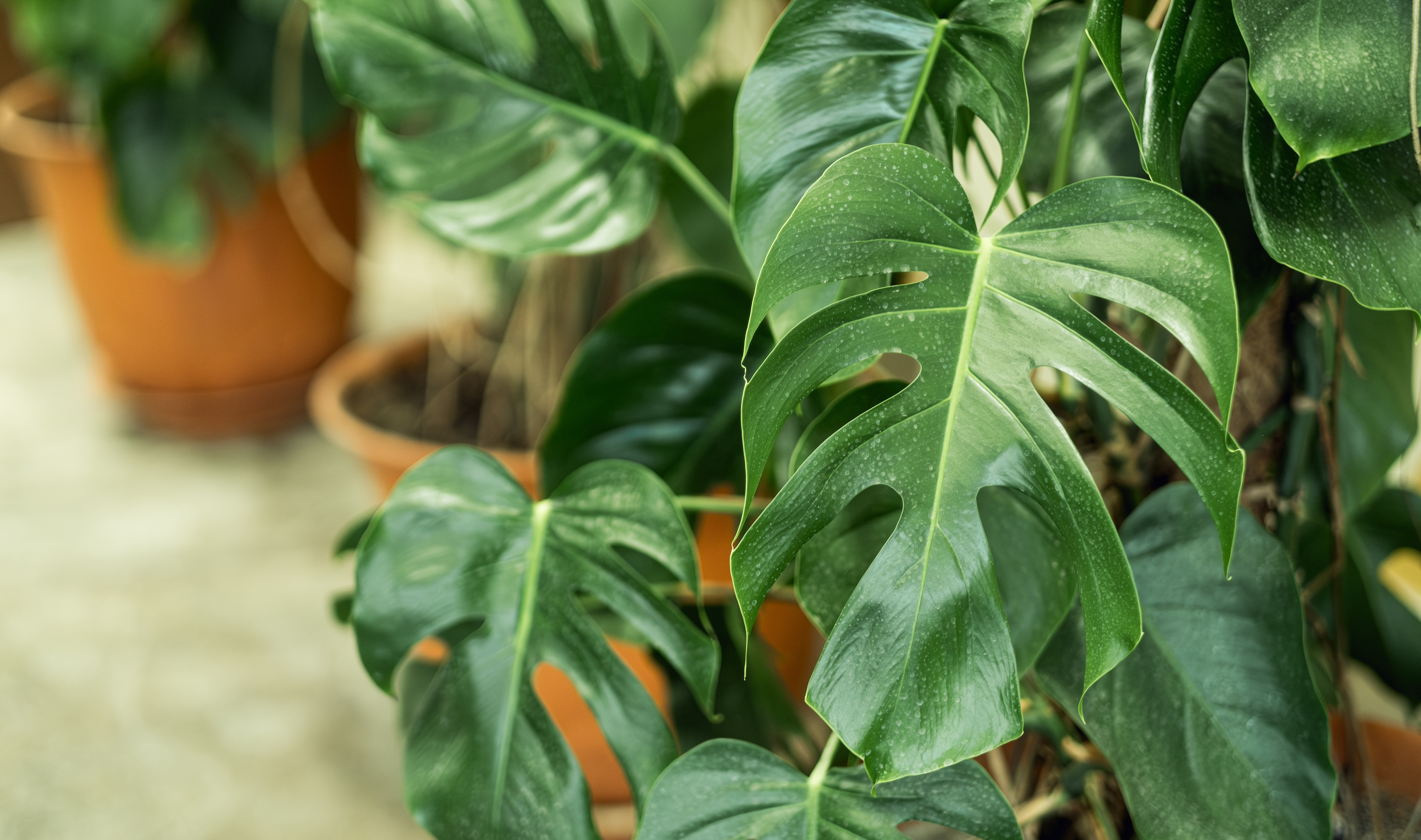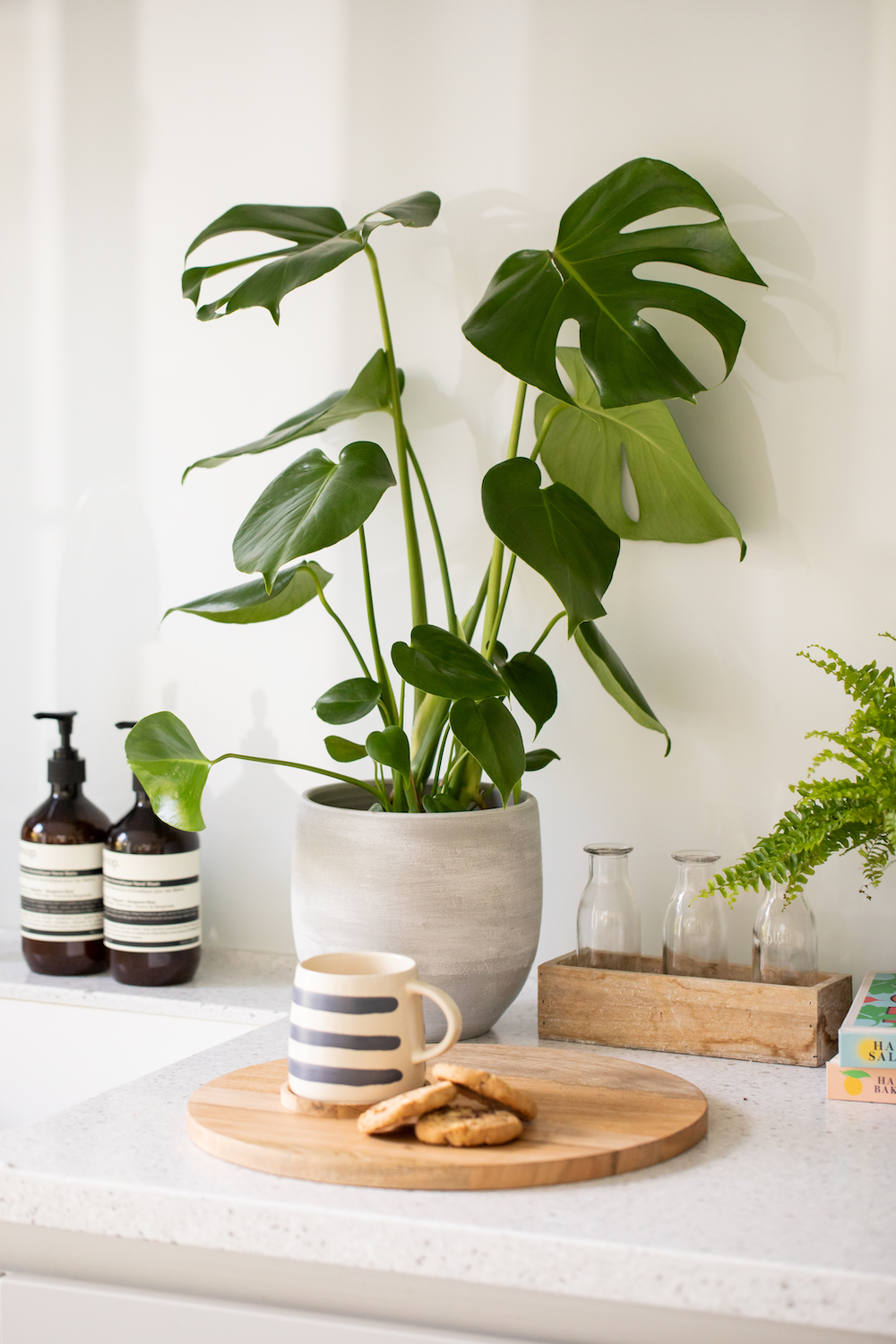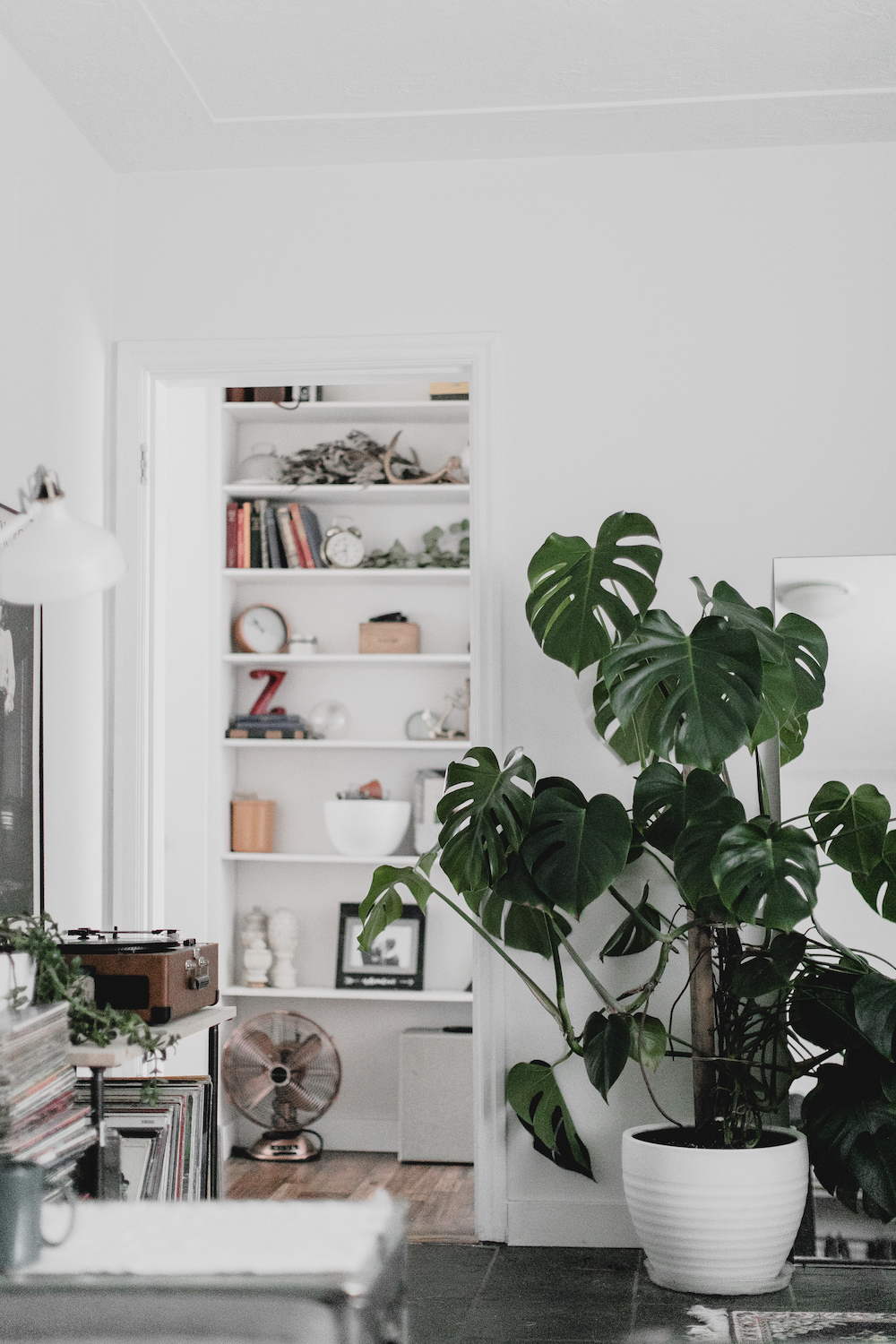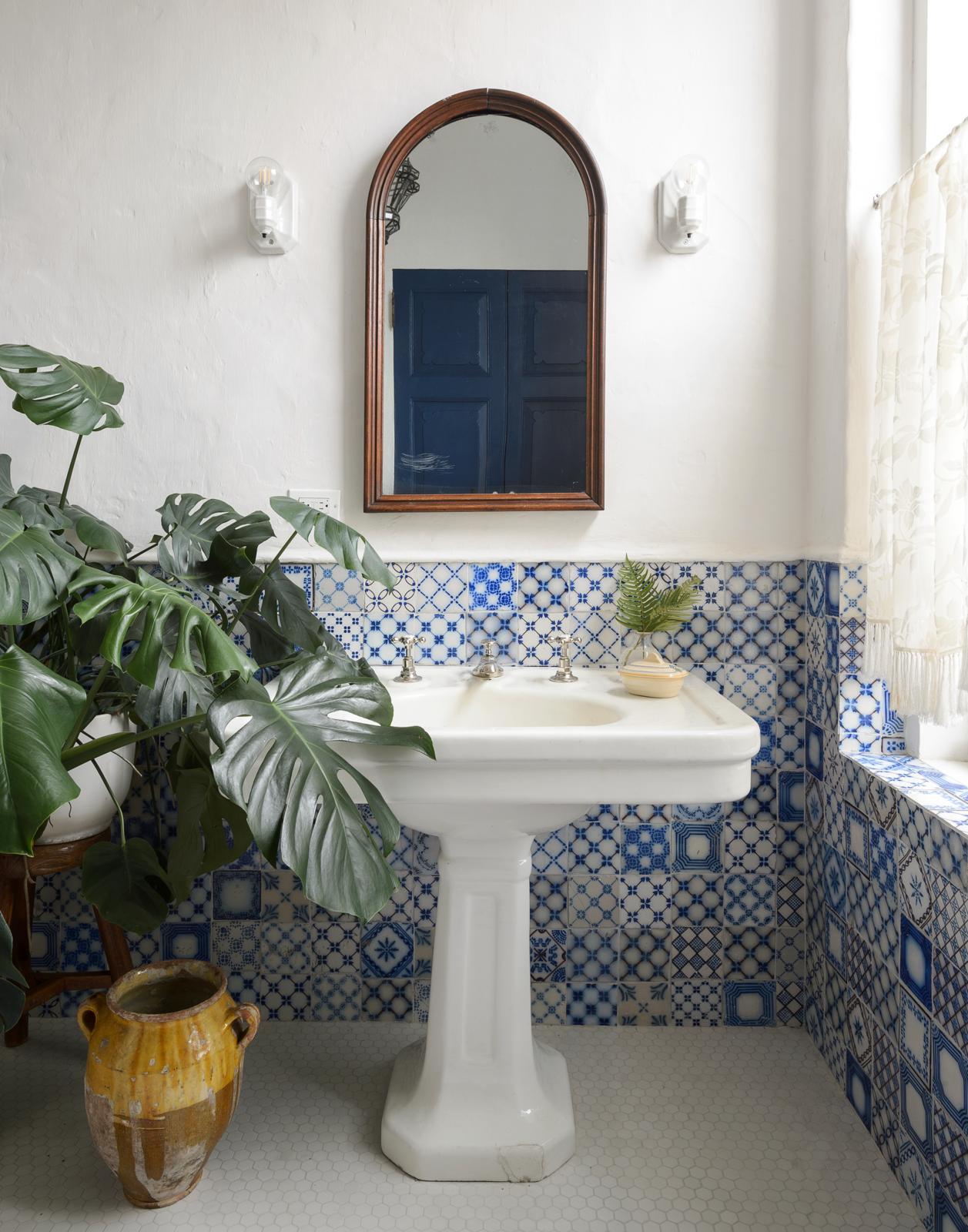
Who doesn't love a Monstera? The huge, lush, fenestrated foliage and propensity to grow fast makes a room feel fresh and vibrant.
Monstera plant care is super-easy, too, but with the changing seasons, it can be tricky to know how often to water a Monstera to keep it thriving.
The golden rule of plant care appears to be that too little water is better than too much, and this is especially true with Monstera. But what is the optimal amount of moisture for these tropical plants?
We've asked experts to give us the skinny on how to adjust our Monstera watering techniques throughout the year to keep these plants flourishing.
How often to water Monstera

Many of us don't pay too much attention when it comes to watering houseplants, just topping them up weekly, or when they look a little droopy or sad. However, this is often to the plant's detriment. It's far better to get into the habit of checking the soil once or twice a week to see if your Monstera needs moisture.
Julia Omelchenko, resident botany expert at Plantum (the app that helps identify plants and improve plant care) explains that because it's a tropical plant, Monstera requires plenty of water. Although, she cautions us not to go overboard.
"From spring to early fall, you can water Monstera once or twice a week," says Julia. "In the winter, scale back on watering to once every 10–14 days. Remember that your watering frequency will vary depending on pot size, type of soil, humidity level, sunlight, and the growth stage of the plant."
Julia continues: "The soil dries out differently between waterings depending on the season and the age of your plant. Don't stick to a strict watering schedule, but do check the plant regularly, and allow an inch (1–2 cm) of the soil to dry out between waterings. This way, the root system will stay healthy and won't develop rot."
How to tell if your Monstera requires water

There are various types of Monstera plants and thankfully, the care for all of them is similar. Plant experts suggest touching the topsoil and checking your plant over before automatically watering it.
"If the top inch (1–2 cm) of soil feels dry, your Monstera is thirsty," says Julia. "Look at the leaves—if they’re droopy or saggy, this means your plant is likely dehydrated. Or if the leaves of your Monstera have turned yellow and dried at the edges, then you need to increase watering and make sure the soil is evenly soaked."
The expert says you should also take the growing conditions into consideration. "The soil dries out faster in well-lit, warm spots," she says. "You can water less frequently in cooler and more shaded locations. If you lift the pot and it feels light, then your plant needs watering. A well-watered plant will feel heavy."
Price: $117.90
Was: $168
This charming Haws Watering Can + Mister Gift Set from Anthropologie is a true beauty. Dripping in fine terracotta hues, this product is ideal for indoor and outdoor use.
Price: $20
This Bronze Metal Watering Can from The Sill is quite the looker. It has a charming round handle and can carry around 1 liter of water.
Price: $22.99
Was: $27.99
Available in eight different colors from Amazon, this Watering Can for Indoor Plants is stylish and sturdy. It has a comfortable handle and comes with a detachable sprinkler head.
Can Monstera be overwatered and how do you know if it is?

Most plants can be over-watered, and Monstera is no exception. Knowing how often to water houseplants is fundamental to their survival, and many suffer from too much moisture rather than too little, including Monstera.
"It’s better to underwater a Monstera than overwater it," says Justin Hancock, horticulturalist, Costa Farms. "Overwatering can lead to root suffocation, which is much harder for the plant to recover from and can even lead to its death. A well-draining potting mix can be helpful if you tend to water too frequently."
Julia tells us: "Overwatering is more dangerous than underwatering, as it leads to root rot and fungal infections. One of the first signs is waterlogged soil. If the soil remains wet a few days after watering, it’s a red flag. Other signs to look out for include paling, yellowing, and unattractive foliage. In severe cases, the leaves may even turn dark, develop soft spots, and you’ll notice an unpleasant odor emanating from the soil.
"Fungus gnats or mold may appear on the soil surface in case of overwatering. Both gnats and mold thrive in moist environments, so their presence is a warning sign," continues Julia. "Once you notice any of these symptoms, repot the plant in fresh, well-drained soil, reduce watering, and ensure adequate light and air circulation (but avoid drafts)."
FAQs
Do Monsteras like to be misted?
Julia Omelchenko, resident botany expert at Plantum explains that Monstera is a tropical plant that requires high humidity. "The misting frequency should depend on the growing conditions," says Julia. "If the leaf tips dry out and turn brown, that means your Monstera lacks humidity.
"In warm and dry weather, mist your Monstera daily or several times a week. This will create an optimal microclimate around the plant and protect the leaves from drying out.
"If you have a heater on during winter, mist your Monstera daily or even several times a day. You can also place a humidifier next to the plant to maintain high humidity."
However, the expert says, "at moderate temperature and humidity, you don’t need to mist Monstera. Just protect it from drafts and water it as needed. When it suffers from excessive humidity, you’ll see water droplets appear on the leaf tips—this is called guttation. In this case, stop misting whatsoever and be careful not to overwater the soil."







